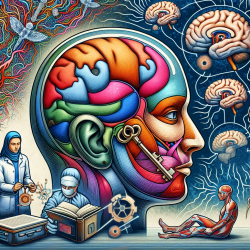Empowering the Future: Transforming Youth Mental Health
In the realm of mental health, the period between 12 and 25 years of age is crucial. This is when most mental disorders manifest, emphasizing the need for timely intervention. The research article "Towards a Youth Mental Health Paradigm: A Perspective and Roadmap" presents a transformative approach to addressing these challenges. It highlights the importance of early intervention and the development of novel service models tailored to the unique needs of young people.
Understanding the Youth Mental Health Paradigm
The article underscores the significance of understanding the interactions between risk factors, protective factors, and brain development. These interactions are pivotal in the emergence of psychopathology in youth. By focusing on early diagnosis and intervention, practitioners can significantly enhance mental health outcomes for young people.
Key Pillars for a Youth Mental Health Paradigm
The research identifies several core pillars that form the foundation of a youth mental health paradigm:
- Sensitive Periods: Recognizing time-limited developmental windows where environmental exposures significantly impact neural circuits and behavior.
- Developmental Cascades: Understanding how risk factors interact with sensitive periods on multiple levels, influencing the emergence of mental disorders.
- Novel Diagnostic Approaches: Developing diagnostic tools that facilitate early intervention for sub-threshold symptoms of emerging psychopathology.
Implementing the Paradigm in Practice
For practitioners, implementing this paradigm involves embracing new diagnostic frameworks and service models that prioritize early intervention. This approach requires a shift from traditional models focused on fully established disorders in adulthood to a more proactive stance that targets emerging mental health issues during youth.
Innovative Service Models
One of the key recommendations is the development of novel service models that are accessible and youth-friendly. These models should integrate digital technologies and telehealth services to reach young people who may face barriers to accessing traditional mental health care.
The Role of Digital Technologies
Digital technologies offer unique opportunities for early intervention and prevention. By incorporating digital mental health tools, practitioners can enhance their ability to detect emerging mental disorders and provide timely interventions. Hybrid models that combine technology with human support, such as the Moderated Online Social Therapy (MOST), have shown promise in reducing stress and improving mental health outcomes for young people.
Encouraging Further Research
While the research provides a comprehensive roadmap for transforming youth mental health, it also highlights the need for ongoing research and innovation. Practitioners are encouraged to engage with the latest findings and contribute to the development of new interventions and service models that address the unique needs of young people.
To read the original research paper, please follow this link: Towards a Youth Mental Health Paradigm: A Perspective and Roadmap.










